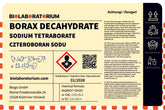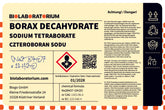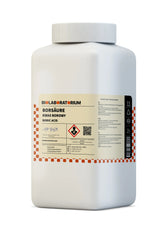Ammonium benzoate – A fascinating organic compound
Ammonium benzoate is a crystalline organic compound that finds diverse applications in chemistry and industry. This interesting substance combines a unique molecular structure with special chemical properties, making it a valuable component in numerous products.
The structure of ammonium benzoate
Ammonium benzoate consists of two components: the ammonium ion (NH4+) and the benzoate ion (C6H5COO-). These two ions combine to form a salt that exists as a colorless, crystalline solid at room temperature.
The structure of the ammonium benzoate molecule is fascinating. The ammonium ion has a tetrahedral geometry, where a nitrogen atom is surrounded by four hydrogen atoms. This ion is then connected via electrostatic interactions to the benzoate ion, which in turn consists of an aromatic benzene ring and a carboxylate group.
This combination of organic and inorganic structural elements gives ammonium benzoate unique physical and chemical properties, making it a versatile substance.
Chemical properties of ammonium benzoate
Ammonium benzoate is a crystalline solid that dissolves well in water. The solubility is attributed to the ionic nature of the compound, where the ions are stabilized by solvation in the aqueous environment.
Furthermore, ammonium benzoate is relatively thermally stable and only decomposes at temperatures above 200°C. This stability is due to the strong hydrogen bonds between the ions, which enable a compact crystal structure.
Another interesting feature of ammonium benzoate is its ability to function as a buffer. In aqueous solution, it partially dissociates into its ions, creating a slightly acidic environment. This buffering capacity can be utilized in various applications to stabilize pH values within a specific range.
Synthesis and production of ammonium benzoate
The production of ammonium benzoate is typically carried out through the reaction of benzoic acid with ammonia solution. In this process, the carboxyl group of benzoic acid reacts with the ammonia molecule, releasing water to form the desired salt.
In the laboratory, this synthesis can be easily performed by combining the two starting materials in stoichiometric amounts and bringing them to reaction under stirring. After evaporating the solvent, the crystalline ammonium benzoate crystals are obtained.
Industrially, ammonium benzoate is often obtained as a byproduct in the production of other organic chemicals. For example, it is produced as a coproduct during the neutralization of benzoic acid with ammonia solution.
Applications of Ammonium Benzoate
Due to its diverse properties, ammonium benzoate finds use in numerous industries:
Food Industry
In the food industry, ammonium benzoate is used as a preservative. It inhibits the growth of mold and bacteria, thereby extending the shelf life of products such as juices, jams, or soft drinks.
Cosmetics and Personal Care
Ammonium benzoate is also used in cosmetic products such as creams, shampoos, or deodorants. Here it serves as a pH regulator and preservative.
Pharmaceutical Industry
In the pharmaceutical industry, ammonium benzoate is used as an excipient in medications. For example, it can be used as a buffer or solubilizing agent.
Chemical Industry
In the chemical industry, ammonium benzoate is used as an intermediate for the synthesis of other organic compounds. Additionally, it finds use as a precipitating agent and complexing agent.
Agriculture
In agriculture, ammonium benzoate is used as a fungicide to prevent and combat plant diseases.
This diversity of application possibilities shows what an important role ammonium benzoate plays in our modern world. From food production to pharmacology - this fascinating organic compound is indispensable in many areas.
Conclusion
Ammonium benzoate is a unique organic compound that convinces through its special molecular structure and chemical properties. As a versatile substance, it finds application in numerous industries - from food to cosmetics to pharmaceuticals.
The synthesis and production of ammonium benzoate is relatively simple, which contributes to its widespread use. At the same time, the substance still offers much potential for further research and development of new applications.
Overall, ammonium benzoate is a fascinating example of how organic chemistry influences and enriches our daily lives. This crystalline salt deserves to be examined more closely and appreciated for its significance.















